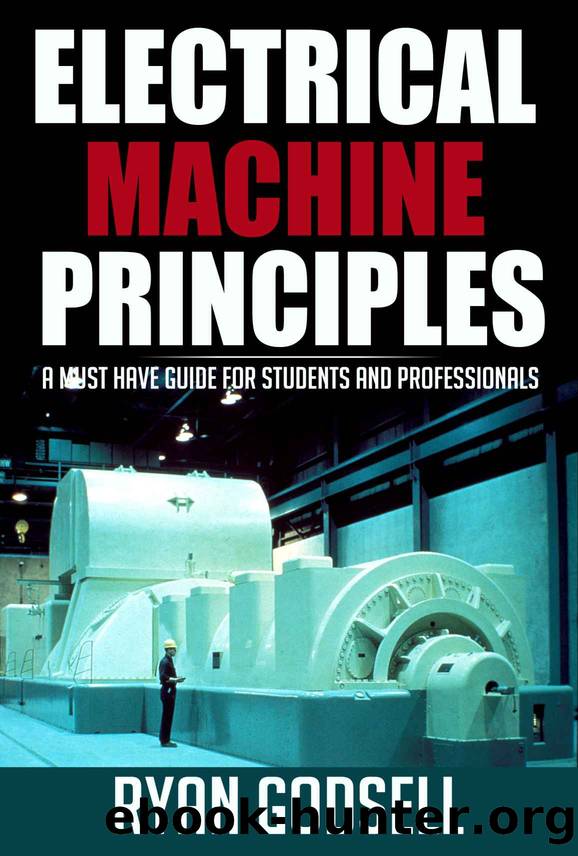Electrical Machine Principles: A Must Have Guide for Students and Professionals (Electrical Engineering Book 1) by Ryan Godsell

Author:Ryan Godsell [Godsell, Ryan]
Language: eng
Format: mobi
Publisher: RG Kindle Publishing
Published: 2014-10-12T00:00:00+00:00
magnetically locks with the statorâs rotating field flux, just as in the following diagram:
Essentially, the rotorâs North and South poles will try to align themselves with the North and South poles of the stator, following them in rotation at an equal velocity. It is easy to see therefore why this type of machine is ideal for constant speed applications.
Now, there are a couple of different methods of supplying direct current to a synchronous motorâs rotor conductors and these will be covered under the construction section of this report. For the moment though, it is important to consider the fact that synchronous motors cannot actually reach synchronous speed without some external means of starting.
At rest, a synchronous machineâs rotor may at one instant be faced with an attractive force towards the field flux - when rotor and stator poles align with opposing polarities - and the next instant, be faced with a repulsive force - when poles align with like polarities. The net result is that the motor will be unable to rotate in any one direction thanks to the opposing forces acting upon it. Read on for the solution.
Download
This site does not store any files on its server. We only index and link to content provided by other sites. Please contact the content providers to delete copyright contents if any and email us, we'll remove relevant links or contents immediately.
| Automotive | Engineering |
| Transportation |
Whiskies Galore by Ian Buxton(41528)
Introduction to Aircraft Design (Cambridge Aerospace Series) by John P. Fielding(32888)
Small Unmanned Fixed-wing Aircraft Design by Andrew J. Keane Andras Sobester James P. Scanlan & András Sóbester & James P. Scanlan(32573)
Craft Beer for the Homebrewer by Michael Agnew(17932)
Turbulence by E. J. Noyes(7700)
The Complete Stick Figure Physics Tutorials by Allen Sarah(7137)
Kaplan MCAT General Chemistry Review by Kaplan(6595)
The Thirst by Nesbo Jo(6435)
Bad Blood by John Carreyrou(6274)
Modelling of Convective Heat and Mass Transfer in Rotating Flows by Igor V. Shevchuk(6222)
Learning SQL by Alan Beaulieu(6035)
Weapons of Math Destruction by Cathy O'Neil(5827)
Man-made Catastrophes and Risk Information Concealment by Dmitry Chernov & Didier Sornette(5645)
Digital Minimalism by Cal Newport;(5389)
Life 3.0: Being Human in the Age of Artificial Intelligence by Tegmark Max(5184)
iGen by Jean M. Twenge(5161)
Secrets of Antigravity Propulsion: Tesla, UFOs, and Classified Aerospace Technology by Ph.D. Paul A. Laviolette(4988)
Design of Trajectory Optimization Approach for Space Maneuver Vehicle Skip Entry Problems by Runqi Chai & Al Savvaris & Antonios Tsourdos & Senchun Chai(4839)
Electronic Devices & Circuits by Jacob Millman & Christos C. Halkias(4746)
